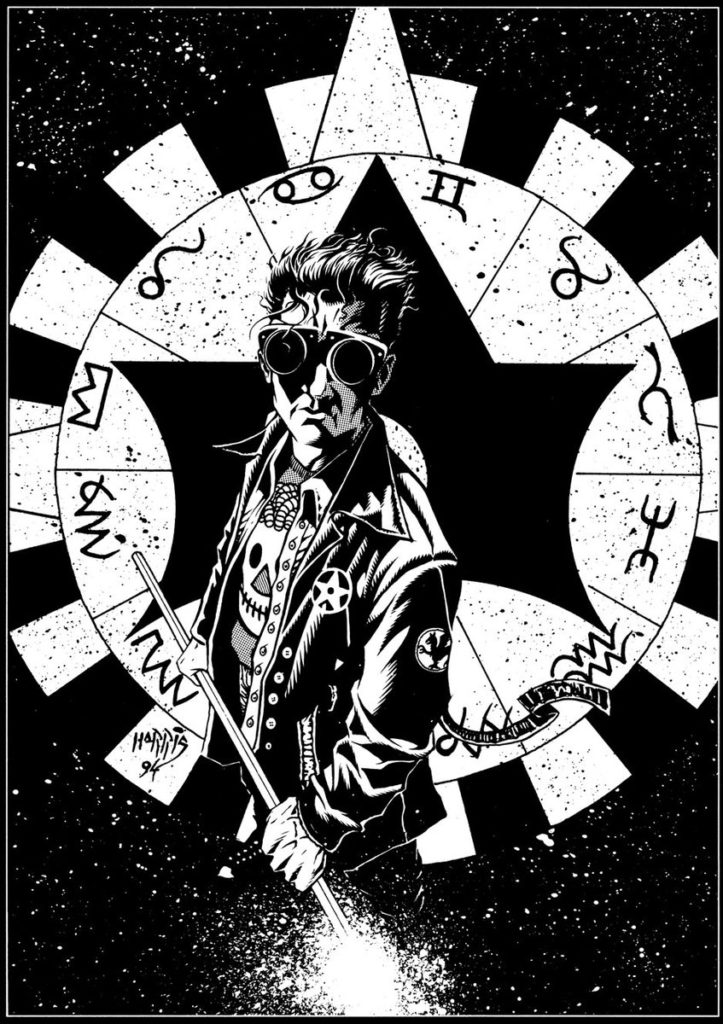Reading the DC comics mini-series event Zero Hour is kind of like watching a slow-motion explosion in a paint factory; it looks amazing, and is frequently thrilling, but also seems quite random, uncoordinated and noisy. It did however have a very specific purpose; the 5-issue series was published on a weekly schedule over the summer of 1994 in order to (a) repair some of the continuity problems that had been lingering since the Crisis on Infinite Earths event in 1985, and (b) to relaunch some of the lower-tier DC titles in a more edgy 90’s style.
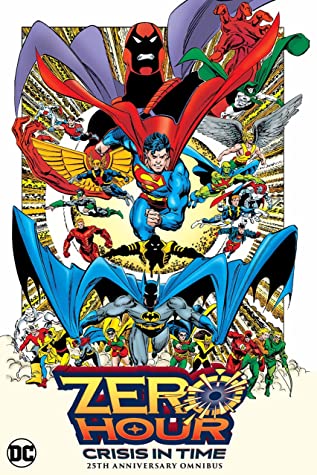
Revisiting the series now is a mixed experience; the plot (written by Dan Jurgens) within each issue is really stripped back, intended to perform as a springboard for the dozens of tie-in issues that would be published in the same weeks. As a result, there isn’t really a main protagonist that carries the story forward; it’s more a sequence of events that the cast of a thousand characters have to react to. On the plus side though, the pace moves like the clappers; each each issue is packed with importance and urgency, while the artwork (also by Jurgens with Jerry Ordway) is beautifully rendered and absolutely bursting with colour. And the consequences were high, with many heroes either killed, retired or MIA by the end of the series.
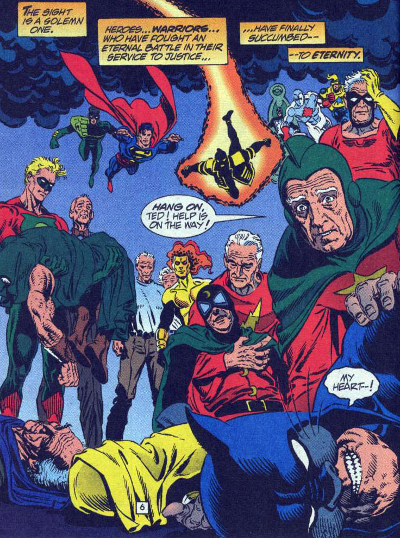
One of the smarter touches was that the issues were released in reverse chronological order, starting at #4 and counting back to #0, at which point all the comics in the DC line also produced an #0 as a device to retell an origin tale of the title characters. Included in this were edgy and dark reinventions for Doctor Fate, Manhunter, Hawkman and Teen Titans; a knee-jerk reaction to the incredibly popular line of contemporary heroes launched by Image comics two years previously. The black sheep in this family of relaunches was Starman; his run was also the longest lived, and is now retrospectively looked back at as one of the best comics of the decade.

The original Starman, Ted Knight, was a classic of the Golden Age; debuting in 1941, he was one of the earliest members of the Justice Society of America. After the tragic events of Zero Hour, Ted hangs up his cape and passes his cosmic rod onto his oldest son David. This doesn’t work out so well, and the first arc of the relaunched Starman comic, titled Sins of the Father (#0 to #3) sees some dangerous villains from Ted’s past (The Mist and The Shade) make moves to wipe out him and his family. The mantle and weaponry of Starman quickly falls to Ted’s younger son Jack Knight. But it’s clear that Jack doesn’t want this responsibility, and as circumstances force it upon him, Jack is going to meet it on his own terms.

It really doesn’t feel like this is a comic produced by one of the mainstream publishers of the time (ie. Marvel or DC). The artwork by Tony Harris is not overly rendered or textured (which was typical of the Image era), and it instead favours solid shadows and pattern making, much more in line with the leading indie creators of the day such as Mike Mignola (Hellboy), Frank Miller (Sin City) and particularly Matt Wagner (Mage). The design in general is gorgeous, with an art deco logo consistent with the 1920’s cityscapes that much of the action unfolds in. Writer James Robinson’s scripts forego cheesy expository dialogue, and have a much more naturalistic spoken style; a practise which wouldn’t really become commonplace until Brian Bendis popularised it 10 years later on Daredevil and Ultimate Spider-man.
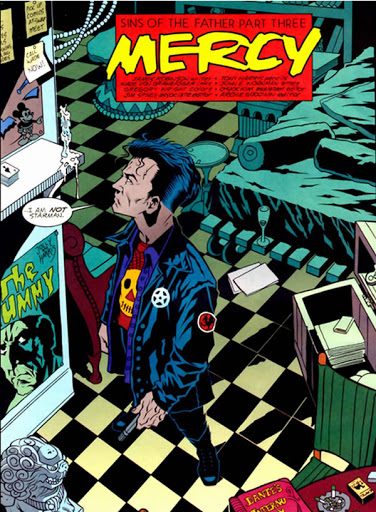
The most distinctive aspect of the comic is quite how strikingly Generation X the lead character is; a deliberate contrast to the Greatest Generation represented by his father Ted. Gen-X tropes include Jack’s reluctance to be a hero (think Dante from Clerks), his love of retro clothes and paraphernalia from previous decades (‘vintage’ shops were massive in the 90s), to his pop culture references (although ‘Chris Isaak’ dates the comic a bit) and the sheer number of characters that wear sunglasses, even at night time. Another distinctly 90’s trope is the heightened level of violence; DC appeared to drop the restrictive Comics Code certification from this title after the initial #0 issue, which allowed boundaries to be pushed, and it lends a real sense of danger and tension to the storytelling.
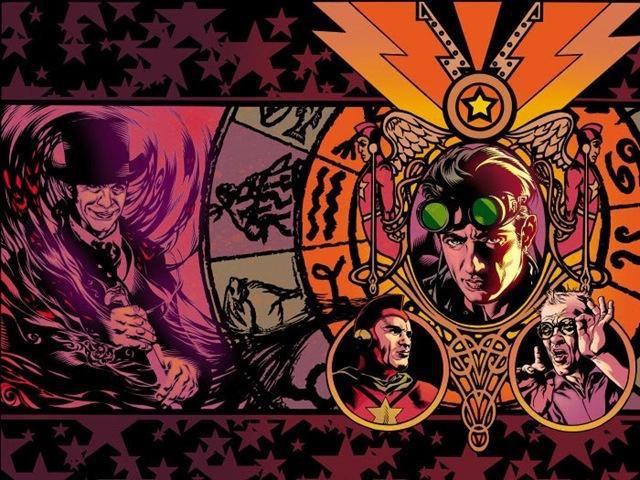
Although it’s still early days on the run, I would recommend any comics reader to at least give this first arc a go; these issues are available quite easily from back-issue sellers at fairly cheap prices. And with The Shade due to appear as a possible antagonist in the second season of the Stargirl tv series, I’m curious to see how he factors into Jack Knight’s unconventional hero’s journey.

